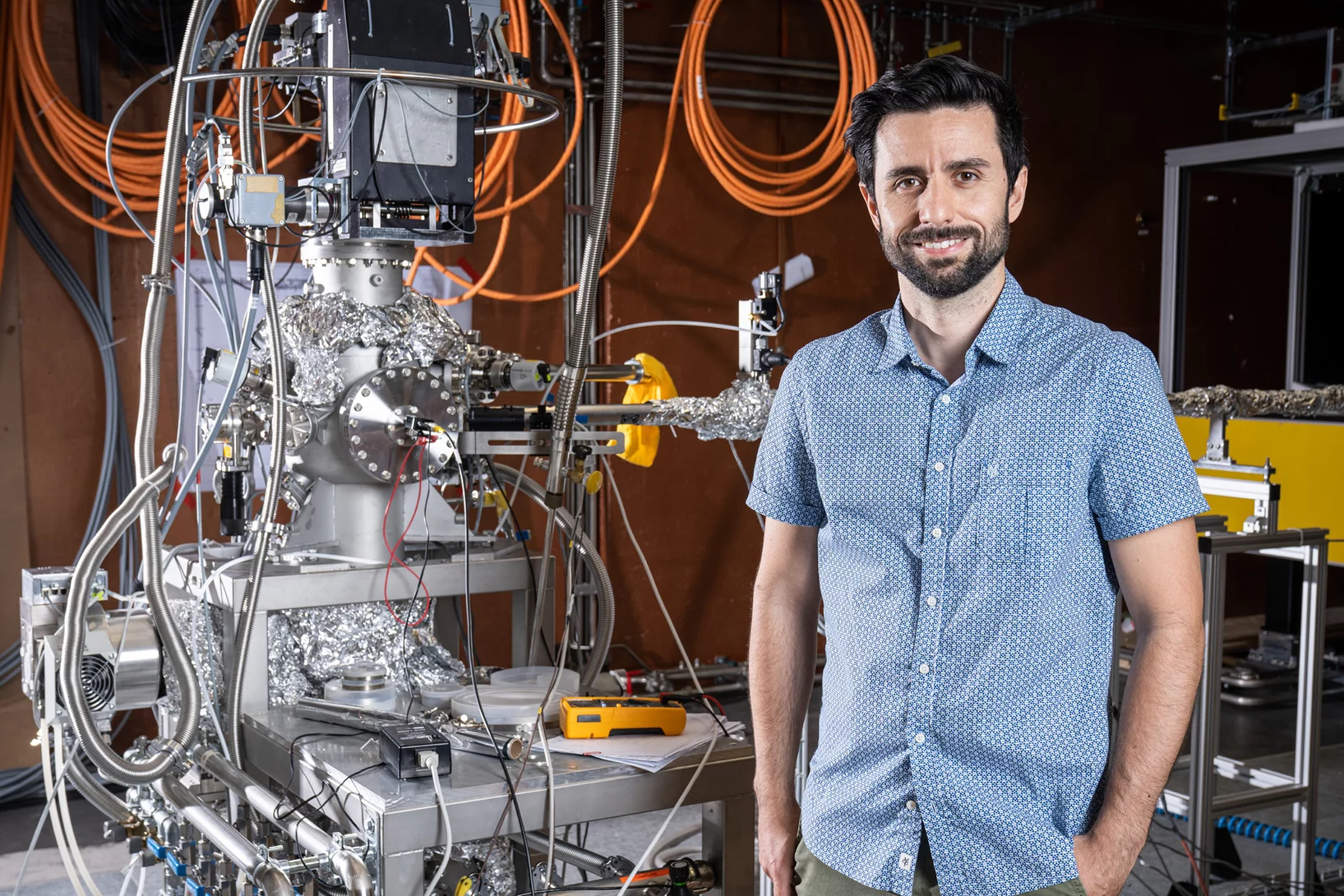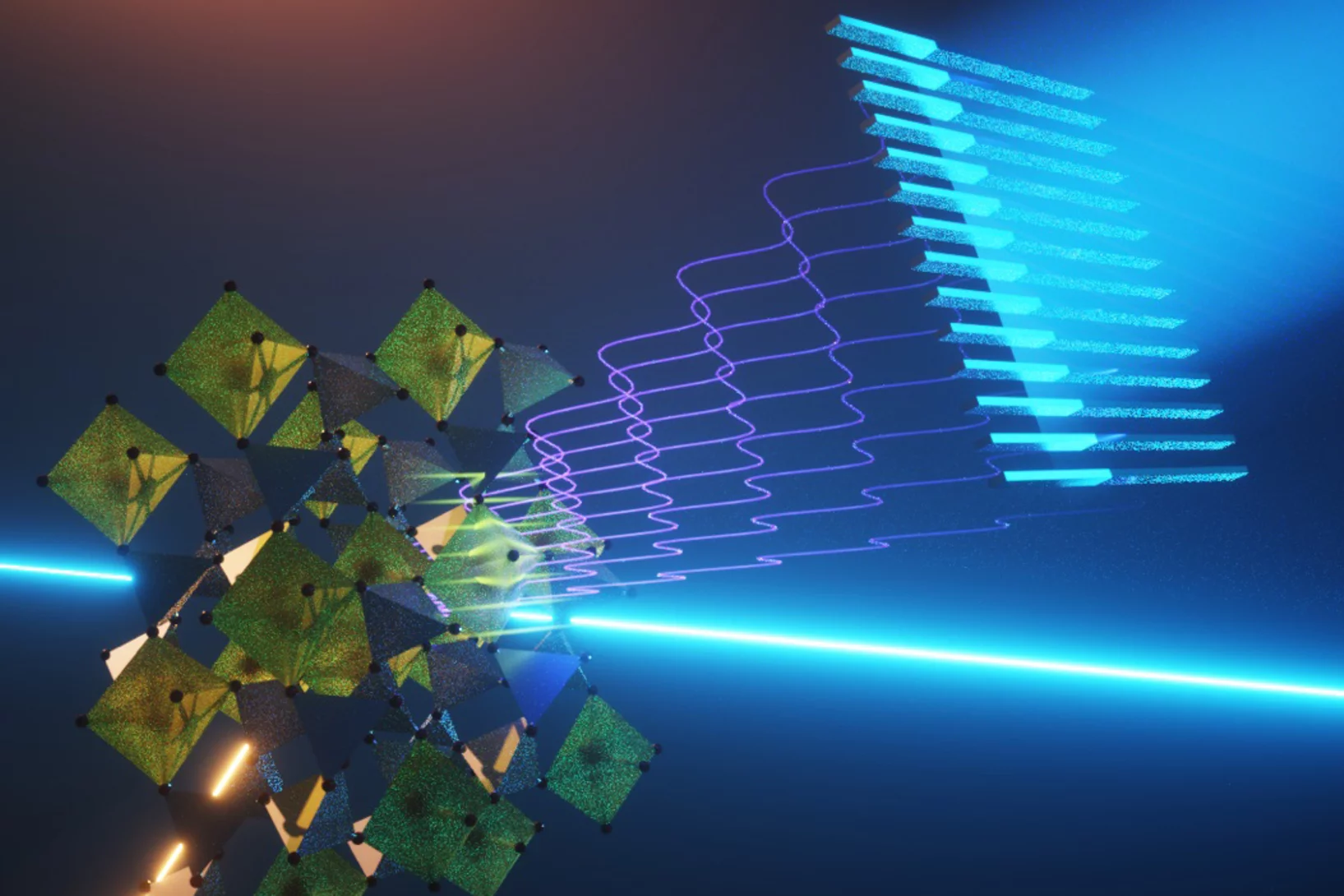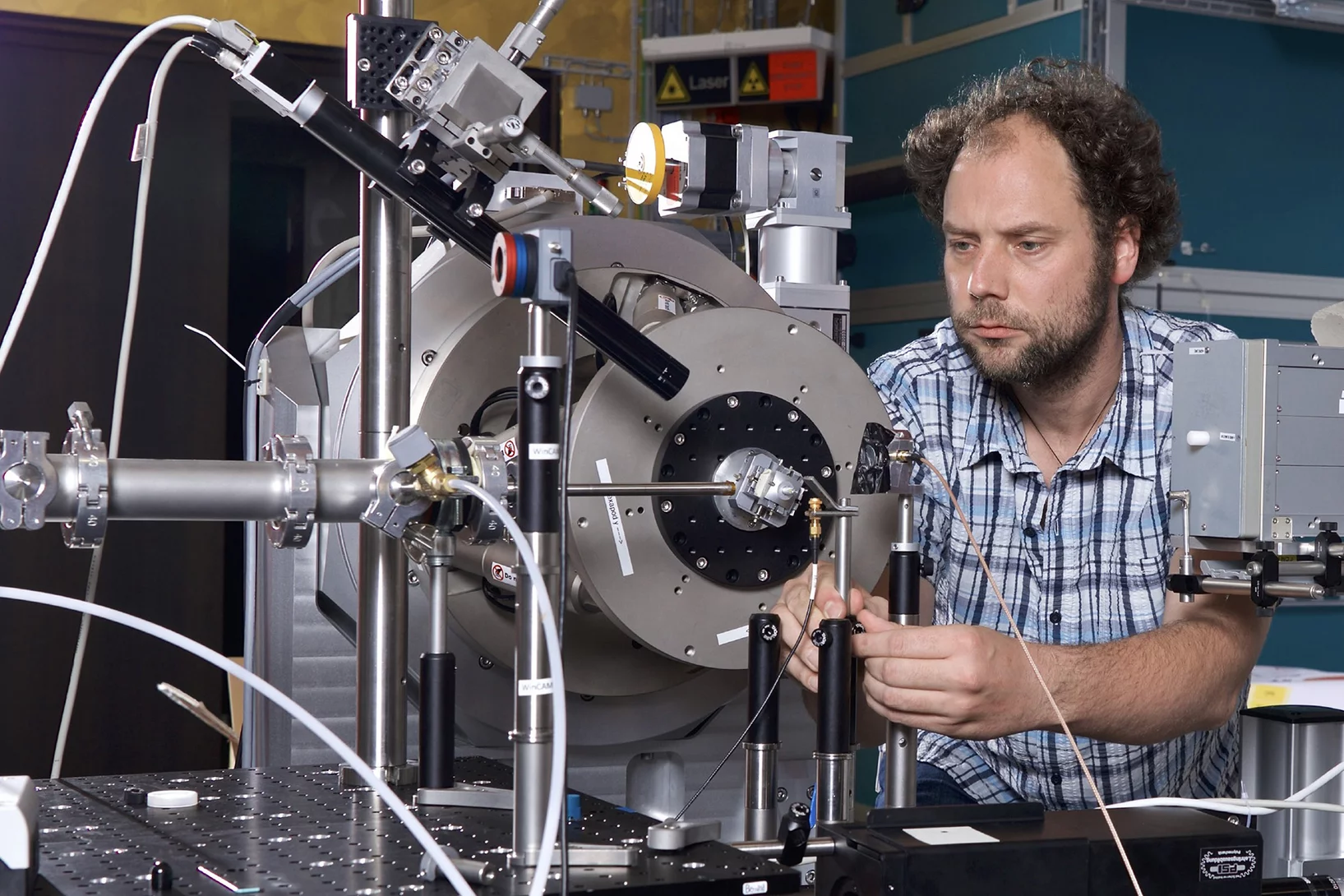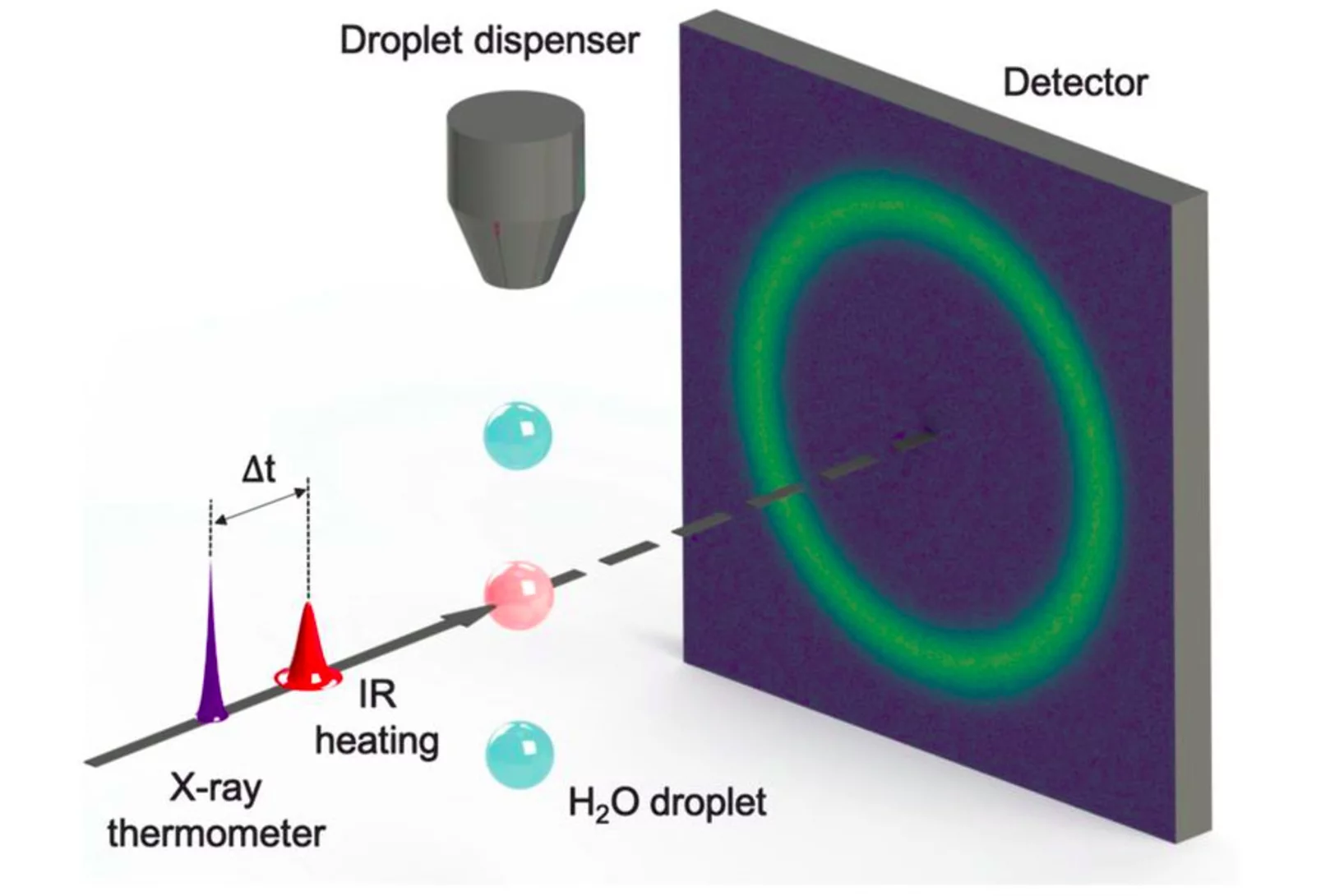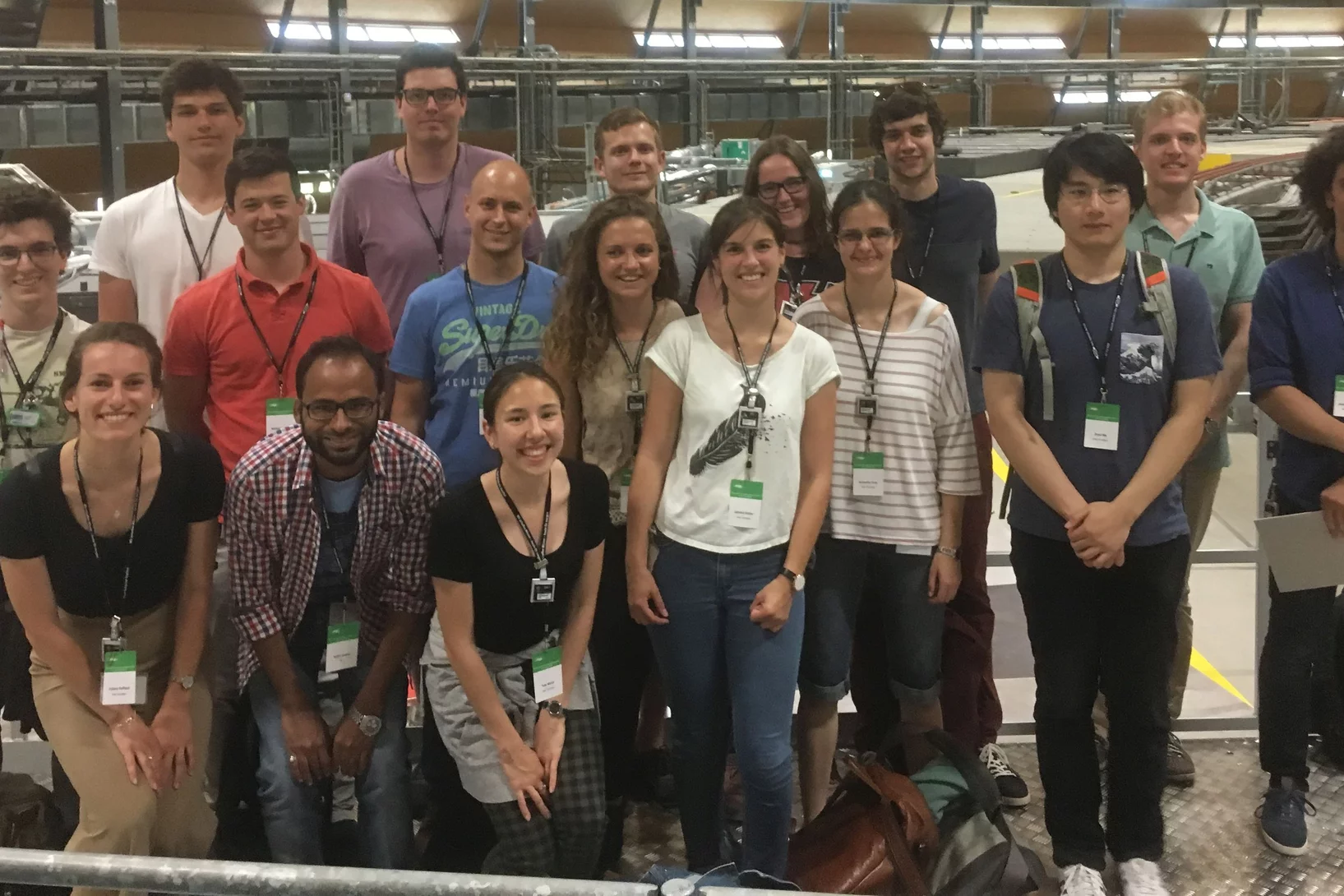Erstes Licht an Furka: Die Experimente können beginnen
Der Weg zu weltweit einzigartigen Experimenten ist frei.
Nicht auf der rosa Wolke
Licht ist lebenswichtig und für Forschende ein wunderbares Werkzeug, um zum Beispiel den Aufbau von Materialien besser zu verstehen.
Zuwachs bei den Datenwissenschaften
Am PSI wird ein weiterer Standort des Swiss Data Science Center entstehen. Der Ausbau soll den Datenwissenschaften in der Schweiz einen weiteren Schub verleihen.
Einmalig scharfer Röntgenblick
Ein neues Verfahren des PSI erlaubt die quantenphysikalische Erforschung von Materialien mithilfe von Röntgenlasern.
Kompakt und leistungsstark wie ein Schweizer Taschenmesser
Der Freie-Elektronen-Röntgenlaser SwissFEL ist tatsächlich so kompakt, stark und vielseitig, wie er geplant war.
HERCULES SCHOOL 2021 AT PSI
During the week of March 15 – 19, we had the pleasure to welcome 20 international PhD students, PostDocs and assistant professors at PSI, taking part in the first virtual HERCULES SCHOOL on Neutrons & Synchrotron Radiation.
Rezeptorproteinen beim Verbiegen zuschauen
G-Protein-gekoppelte Rezeptoren vermitteln unzählige Prozesse im Körper. Im Interview erzählt PSI-Forscher Ramon Guixà, wie er die Rezeptormoleküle auf dem Bildschirm lebendig werden lässt.
Conduction control in nanoparticles
Light induced propagation strain pulse, converting nanoparticles of Ti3O5 from semiconducting to metallic phase.
Ultrafast calorimetry of deeply supercooled water
FEL-based ultrafast calorimetry measurements show enhancement and maximum in the isobaric specific-heat.
Meilenstein für zweite Strahllinie des SwissFEL
Am Freie-Elektronen-Röntgenlaser SwissFEL des Paul Scherrer Instituts PSI wird zurzeit die zweite Strahllinie in Betrieb genommen. Mittels «Athos» wollen Forschende verstehen, wie Katalysatoren funktionieren oder Biomoleküle Erbkrankheiten verursachen.
SwissFEL: Die Schwarze Mörtelbiene fühlt sich hier pudelwohl
Für den Bau des SwissFEL wurden 2013 rund fünf Hektar Wald gerodet und zu neuem Lebensraum für Flora und Fauna umgestaltet. Jetzt haben Biologen und Forstingenieure Zwischenbilanz zum Erfolg des Renaturierungsprojekts gezogen – und sind begeistert.
Spin cascade and doming in ferric hemes
In biology, structure and function are closely interwoven. A case in point is oxygen transport in the lungs, which relies on ferrous heme proteins adopting dome-like shapes.
First light in the SwissFEL Maloja endstation
The first endstation at the SwissFEL Athos soft X-ray branch is rapidly developing and on track for first experiments in 2021.
Advances in long-wavelength native phasing at X-ray free-electron lasers
Long-wavelength pulses from the Swiss X-ray free-electron laser (XFEL) have been used for de novo protein structure determination by native single-wavelength anomalous diffraction (native-SAD) phasing of serial femtosecond crystallography (SFX) data.
«Forschung online erleben»: Mittendrin statt nur dabei
Erstmals Live-Rundgang durch eine Grossforschungsanlage per Video-Stream. Am 9. September haben Interessierte exklusiv die Möglichkeit, sich von Experten des PSI durch den neuen Freie-Elektronen-Röntgenlaser SwissFEL führen zu lassen und zu erfahren, welche Rätsel der Materie und der Natur sich damit lösen lassen.
Mechanismus einer lichtgetriebenen Natriumpumpe aufgeklärt
Forschenden des Paul Scherrer Instituts PSI ist es erstmals gelungen, eine lichtgetriebene Natriumpumpe von Bakterienzellen in Aktion aufzunehmen. Die Erkenntnisse versprechen Fortschritte bei der Entwicklung von neuen Methoden in der Neurobiologie. Für ihre Untersuchungen nutzten die Forschenden den neuen Freie-Elektronen-Röntgenlaser SwissFEL.
Auf der Suche nach dem Leuchtmaterial der Zukunft
Am Paul Scherrer Institut PSI haben Forschende Einblicke in ein vielversprechendes Material für organische Leuchtdioden (OLEDs) erhalten. Das neue Verständnis wird helfen, Leuchtmaterialien mit hoher Lichtausbeute zu entwickeln, die kostengünstig herzustellen sind.
SwissFEL: «Athos» macht grosse Fortschritte
Die neue Strahllinie am Freie-Elektronen-Röntgenlaser SwissFEL des PSI ist schon bald einsatzbereit. Im Dezember lieferte «Athos» das erste Mal Laserlicht − zur Freude der Forschenden, die mit dem Aufbau betreut sind, sogar früher als erwartet.
Forschen und Tüfteln – Der SwissFEL im Jahr 2019
Die neueste Grossforschungsanlage am PSI, der SwissFEL, ist fertiggestellt. Im Januar 2019 begann der Regelbetrieb. Henrik Lemke, Leiter der Gruppe SwissFEL Bernina, zieht eine erste Zwischenbilanz.
Molekulare Energiemaschine als Filmstar
Forschende des PSI haben mithilfe der Synchrotron Lichtquelle Schweiz SLS eine molekulare Energiemaschine in Bewegung aufgenommen und so aufgedeckt, wie die Energiegewinnung an Zellmembranen funktioniert. Dazu entwickelten sie eine neue Untersuchungsmethode, die die Analyse von zellulären Vorgängen deutlich effektiver machen könnte als bislang.
PSI School for Master Degree Students - Introducing Photons, Neutrons and Muons for Condensed Matter Physics and Materials Science
From 17 – 21 June 2019 the Neutron and Muon Division (NUM) and the Photon Science Division (PSD) of PSI hosted 18 Master Degree students of physics, chemistry, materials and interdisciplinary science, as well as nuclear engineering to provide an introduction to the characterization of materials with large scale facilities like SINQ, SμS, SLS and SwissFEL. The course taught a basic understanding of how photons, neutrons and muons interact with matter, and how this knowledge can be used to solve specific problems in materials research.
Details of the program can be found at http://indico.psi.ch/event/PSImasterschool
First serial femtosecond crystallography experiment using SwissFEL’s large bandwidth X-ray pulses
The typical mode of operation at XFEL facilities uses the so-called self-amplified spontaneous emission (SASE) process to generate the short, bright X-ray pulses. This mode of operation is stochastic in nature, causing some variance in intensity and spectrum on a shot-to-shot basis, which makes certain types of crystallographic measurements much more challenging.
Towards X-ray Transient Grating Spectroscopy at SwissFEL
The high brilliance of new X-ray sources such as X-ray Free Electron Laser opens the way to non-linear spectroscopies. These techniques can probe ultrafast matter dynamics that would otherwise be inaccessible. One of these techniques, Transient Grating, involves the creation of a transient excitation grating by crossing X-ray beams on the sample. Scientists at PSI have realized a demonstration of such crossing by using an innovative approach well suited for the hard X-ray regime.
First femtosecond protein pump-probe measurements at SwissFEL
A major milestone in the commissioning of SwissFEL has been reached: the first pump-probe experiments on proteins have been successfully carried out. Crystals of several retinal-binding proteins were delivered in a viscous jet system and a femtosecond laser was used to start the isomerization reaction. Microsecond to sub-picosecond snapshots were then collected, catching the retinal proteins shortly after isomerization of the chromophore.
EU bewilligt 14 Millionen für Schweizer Forschende
Ein Team mit drei Forschenden aus dem ETH-Bereich wurde mit einem prestigeträchtigen EU-Förderpreis ausgezeichnet. Heute erhielten sie den von der EU unterzeichneten Vertrag zur Bestätigung der ausserordentlich hohen Finanzierung in Höhe von 14 Millionen Euro. Damit werden sie Quanteneffekte untersuchen, die das Rückgrat der Elektronik der Zukunft bilden könnten.
SwissFEL's First Call for Proposals
The first SwissFEL call for proposals took place, deadline for submission was the 15th of September. In this first call for proposals SwissFEL received overwhelming interest from the user community. A total of 47 proposals were submitted for the SwissFEL Alvra experimental station and 26 for the Bernina experimental station. The Proposal Review committee PRC took place on 18-19 October 2018.
Bernina status first summer shutdown
The summer shutdown was used to install more missing hardware. With the new components the Bernina instrument will be already very close to the full design capabilities when the exciting time of user experiments will begin in 2019.
First serial femtosecond crystallography (SFX) pilot user experiment at SwissFEL
On the 7th to 12th of August 2018, a collaborative group of scientists from the Paul Scherrer Institute and members of the LeadXpro and Heptares pharmaceutical companies led by Karol Nass (PSI macromolecular crystallography MX-SLS group) performed the first serial femtosecond crystallography (SFX) pilot user experiment at the SwissFEL X-ray free electron laser (XFEL).
MOOCs – a paradigm shift in education
In March 2018, the nine-week MOOC “Introduction to synchrotrons and x-ray free-electron lasers” (abbreviated to “SYNCHROTRONx”) came online via the edX provider of the École Polytechnique Fédérale de Lausanne (EPFL), created by Phil Willmott of the Swiss Light Source, Paul Scherrer Institute. “MOOC” is an acronym for “massive open online course”, a teaching platform started in the first decade of this century, which has become increasingly popular in the last five to six years. MOOCs have no limits to participation and are free. Some of the most popular MOOCs can attract many tens of thousands of participants. Even the most specialized subjects may have an initial enrollment of over a thousand, more than an order of magnitude larger than that typically found in traditional higher education. There were over 70 million MOOC enrollments covering nearly 10’000 subjects offered by the top five providers in 2017 alone!
A first glance at the SwissFEL x-rays wave-front
X-ray Free Electron Lasers (XFELs) combine the properties of synchrotron radiation (short wavelengths) and laser radiation (high lateral coherence, ultrashort pulse durations). These outstanding machines allow to study ultra-fast phenomena at an atomic level with unprecedented temporal resolution for answering the most intriguing open questions in biology, chemistry and physics.
